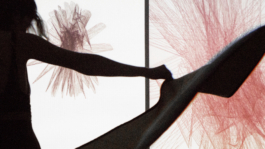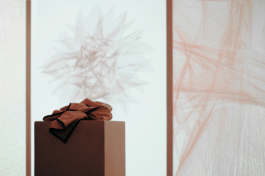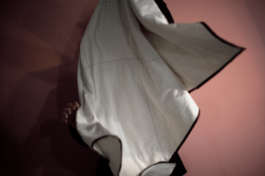
Nama, installation view, TAL (Tech Art Lab), Rio de Janeiro, 2013.
Nama, installation view. Video: in collaboration with Helena van Kampen, 2012.

Nama, installation view, TAL (Tech Art Lab), Rio de Janeiro, 2013.
Nama, instrument showcase.

Nama, instrument view.
Nama, 2012
Interactive installation, variable dimensions
Cloth, electronics, projection, sound, algorithm
Nama was the core of an ongoing research project on relational aesthetics and the thresholds between the tangible, the virtual, and the disembodied. As a result of this research, an open-source soft-circuit motion-sensing interface, an interactive installation, and an undergraduate thesis were produced. Taking up the concept of relational objects developed by Brazilian artist Lygia Clark in the 1960s, the interface is based on a textile fabric, which, due to its physical properties, is able to bring to mind characteristics related to virtuality, such as: softness, uncertainty, flexibility and fluidity. Both the instrument and the installation aim to provide a non-verbal kinetic understanding of the virtual through the folding and unfolding of an object that is tangible, incorporeal, and digital.
Sound design: Ales Tsurko. Assistance and support: Mariana Basso. Developed as part of the BA in Design submitted at the São Paulo State University (UNESP), 2012, supervised by Prof. Dr. Dorival Campos Rossi.
Every abyss is a poem yet unfinished
That which stays
Becoming tropical
© 2012 - 2025